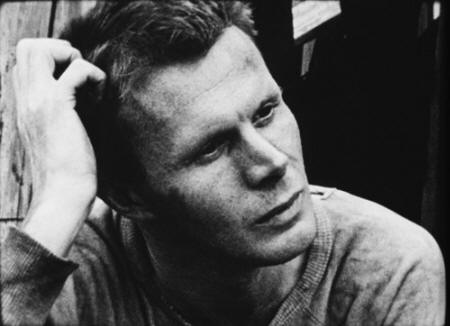 Willard Maas (June 24, 1906 – January 2, 1971) was an American experimental filmmaker and poet.
Willard Maas (June 24, 1906 – January 2, 1971) was an American experimental filmmaker and poet.
Wife Marie Menken
Queer Places:
Columbia University (Ivy League), 116th St and Broadway, New York, NY 10027
62 Montague St, Brooklyn, NY 11201
 Willard Maas (June 24, 1906 – January 2, 1971) was an American experimental filmmaker and poet.
Willard Maas (June 24, 1906 – January 2, 1971) was an American experimental filmmaker and poet.
Maas was born in Lindsay, California and graduated from State Teachers College at San Jose. He came to New york in the 1930s and continued his education at Long Island College and Columbia University.[1] He was the husband of filmmaker Marie Menken. The couple, married in 1937, achieved some renown in New York City's modern art world from the 1940s through the 1960s, both for their experimental films and for their salons, which brought together artists, writers, filmmakers and intellectuals.[2] Maas had extramarital homosexual relations, but Menken apparently did not resent them; their shouting matches were instead a kind of "exercise".[3]
In 1945 Willard Maas published a poetry anthology, The War Poets. The love sonnet Letter to R, written by Maas while an army private at Camp Crowder, MO, was intended for Rupert Barneby. Maas was to become an influential avant-garde filmmaker after the war, and Dwight Ripley would help finance his projects.
"The Maases were warm and demonstrative," wrote Andy Warhol in his own memoir, "and everybody loved to visit them." The parties they hosted in their penthoue at 62 Montague Street in Brooklyn Heights ("a shack on the roof," corrected Menken) brought artists, groupies, patrons, and intellectuals together before a spectacular backdrop of Manhattan across the East River, and were popular, even defining events in the art scene of their time. Stan Brakhage recalled the parties organized by Menken and Maas as the most lavish he had attended. "They would include everybody," he reported, "Marilyn Monroe and her then husband Arthur Miller, Charles Addams, Reinhold Niebuhr, Truman Capote and Andy Warhol, to name only a few." He listed also a "blowzy, rich old lady" identified as the Medea of the Twentieth Century, Hazel McKinley, the sister of Peggy Guggenheim.
According to their associate Andy Warhol, "Willard and Marie were the last of the great bohemians. They wrote and filmed and drank—their friends called them 'scholarly drunks'—and were involved with all the modern poets."[2] In the 1960s, Maas was a faculty member at Wagner College and an organizer of the New York City Writer's Conference at the college, where Edward Albee was a writer in residence. The filmmaker Kenneth Anger indicates that Maas and Menken may have been a significant part of the inspiration for the characters of George and Martha in Edward Albee's 1962 play Who's Afraid of Virginia Woolf?.[4]
After an ill-fated experiment with LSD, Maas attempted suicide. He was hospitalized temporarily at Payne Whitney, the psychiatric unit of New York Hospital. When he returned home he was taking lithium. Nevertheless he and Menken continued to drink heavily, perhaps competitively, every day. "Marie's drinking," reported Brakhage, "finally killed her." Menken died, aged 61, on December 29, 1970. Four days later, Maas, 59, followed her. Maas' obituary in the New York Times attributed death to a heart attack, but colleagues assumed that it was suicide.
Maas died in Brooklyn Heights on January 2, 1971. He was cremated. The Maas/Menken materials and letters are at the University of Texas at Austin. A selection of them is on deposit/loan (in Trust) at the Anthology Film Archives in New York. The Willard Maas Papers—a collection of about 500 letters, manuscripts, page proofs, photographs, drawings, play scripts, and film scripts from 1931 to 1967—is housed at Brown University.[5]
My published books: